 Front page > Programming > OAuth Authentication in Spring Boot: A Guide to Integrating Google and GitHub Login
Front page > Programming > OAuth Authentication in Spring Boot: A Guide to Integrating Google and GitHub Login
OAuth Authentication in Spring Boot: A Guide to Integrating Google and GitHub Login
Enhance Security with OAuth 2.0: Implementing Social Logins in Spring Boot
In the world of modern web development, securing your applications and making authentication as smooth as possible for users is a top priority. That’s where OAuth 2.0 comes in—it’s a powerful tool that not only helps secure your APIs but also lets users log in with their existing accounts from platforms like Google and GitHub. This makes things easier for everyone: users don’t need to remember yet another password, and developers get a reliable way to manage authentication.
In this blog, I’ll take you step by step through how to set up OAuth 2.0 in a Spring Boot application. We’ll be integrating both Google and GitHub for authentication, so your users can choose which service they want to use to log in. I’ll also show you how to protect your API endpoints using JWT (JSON Web Tokens), ensuring that only authenticated users can access the resources they’re supposed to.
Whether you’re building a new app or adding security to an existing one, this guide will give you the tools you need to keep your Spring Boot application secure and user-friendly.
Visit https://start.spring.io/
create the project
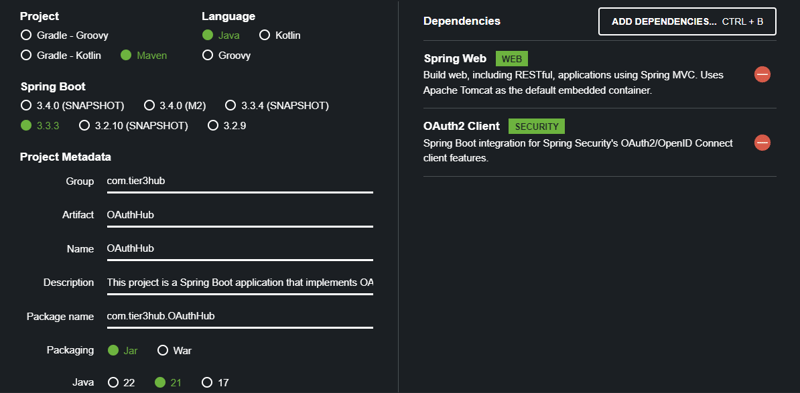
Download the zip and extract it and load the project to your IDE.
The "OAuth2 Client" dependency in Spring Boot simplifies integrating OAuth 2.0 authentication with providers like Google and GitHub. It handles the entire OAuth login flow, including redirecting users to the provider's login page, managing tokens, and securing API endpoints. By adding this dependency, you can easily enable secure and user-friendly authentication in your Spring Boot application.
The "Spring Web" dependency in Spring Boot is crucial for developing web applications. It provides essential features like RESTful API creation, MVC architecture support, and the ability to serve HTML views. With Spring Web, you can easily handle HTTP requests and responses, manage routing, and integrate with other Spring components, making it a foundational part of building robust web applications.
Application Configuration
To set up your Spring Boot application for OAuth 2.0 authentication with Google and GitHub, you'll need to configure the application.properties file. This file contains essential settings for your application, including OAuth client credentials, logging levels, and JWT configurations.
spring.application.name=oauth2-authentication-service server.port=8000 #for google spring.security.oauth2.client.registration.google.client-id=YOUR_GOOGLE_CLIENT_ID spring.security.oauth2.client.registration.google.client-secret=YOUR_GOOGLE_CLIENT_SECRET #for github spring.security.oauth2.client.registration.github.client-id=YOUR_GITHUB_CLIENT_ID spring.security.oauth2.client.registration.github.client-secret= YOUR_GITHUB_CLIENT_SECRET
OAuth Client Configurations: Replace YOUR_GOOGLE_CLIENT_ID, YOUR_GOOGLE_CLIENT_SECRET, YOUR_GITHUB_CLIENT_ID, and YOUR_GITHUB_CLIENT_SECRET with the credentials you obtain from Google and GitHub when you register your application.
To register your application with Google and GitHub for OAuth 2.0 authentication, we need to go https://console.cloud.google.com
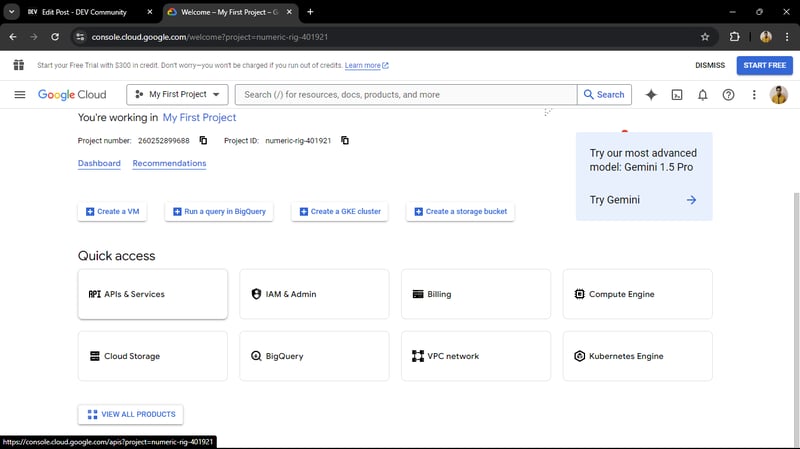
click on API Services
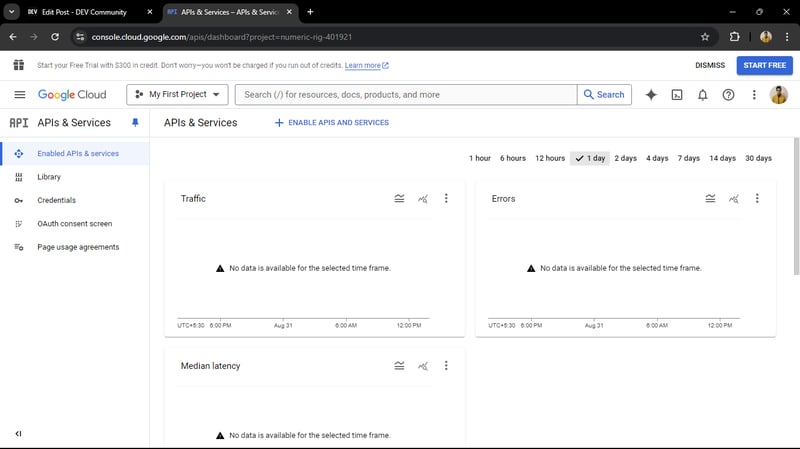
Credentials -> create Credentials -> OAuth client ID
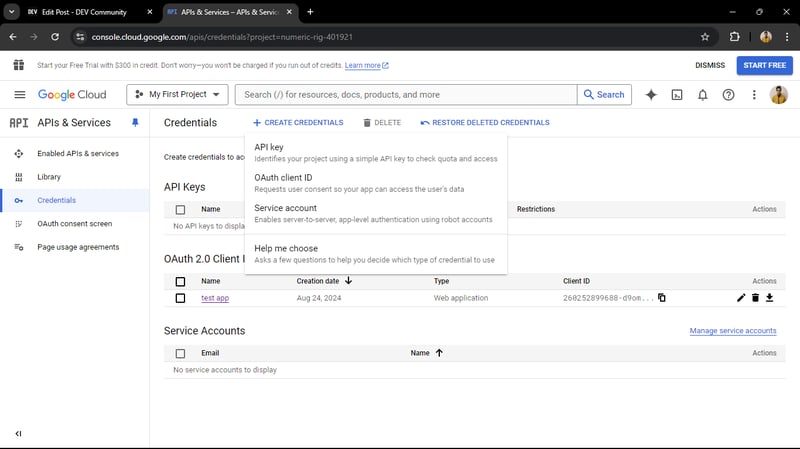
OAuth client ID -> Create OAuth client ID
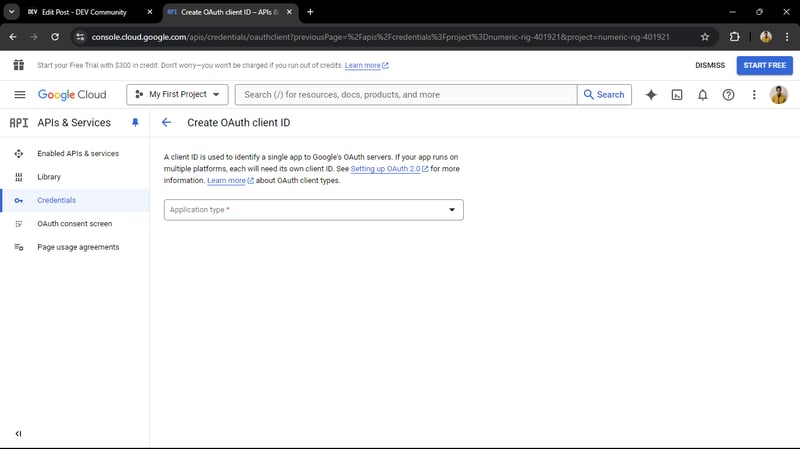
select Application type to web Application
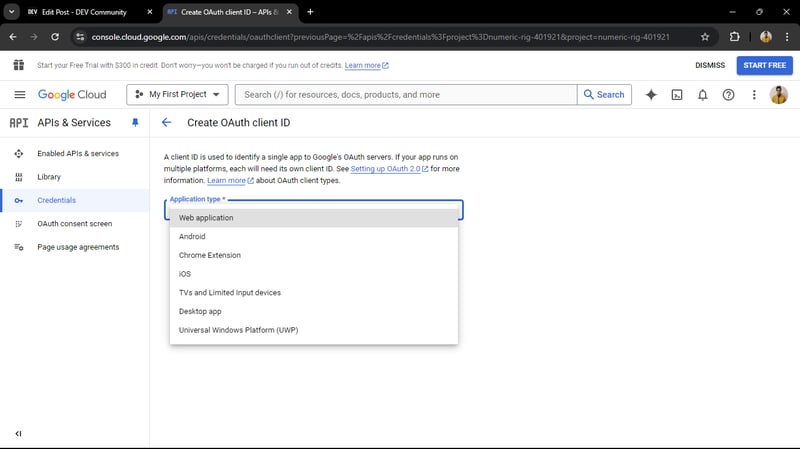
give application name

set Authorized redirect URIs with this URL and here our application is running on 8000 port so application port is 8000. then click on create
http://localhost:8000/login/oauth2/code/google
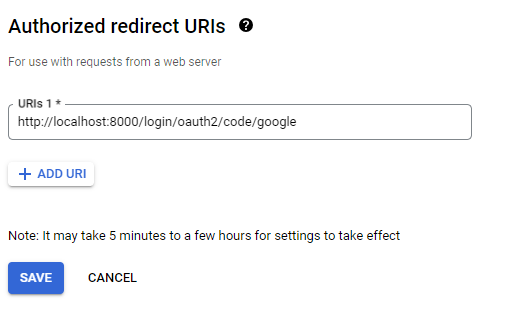
after that OAuth client is created and we get the client ID and the Client secret.

copy both and replace with the the properties of application.properties file
spring.security.oauth2.client.registration.google.client-id=YOUR_GOOGLE_CLIENT_ID spring.security.oauth2.client.registration.google.client-secret=YOUR_GOOGLE_CLIENT_SECRET
The SecurityConfig class configures security for a Spring Boot application using OAuth2. It defines a SecurityFilterChain bean, which sets up security rules. The authorizeHttpRequests method ensures that all incoming requests require authentication. The .oauth2Login(Customizer.withDefaults()) line enables OAuth2 login functionality with default settings. Finally, the securityFilterChain method returns the configured security filter chain by calling http.build(). This setup ensures that the application is secure and supports OAuth2 authentication for users.
Accessing Your Application via Chrome
When developing and testing your Spring Boot application, it's crucial to know how to interact with it through Postman. If your application is running locally on port 8000, you can access it using the following base URL:
http://localhost:8000
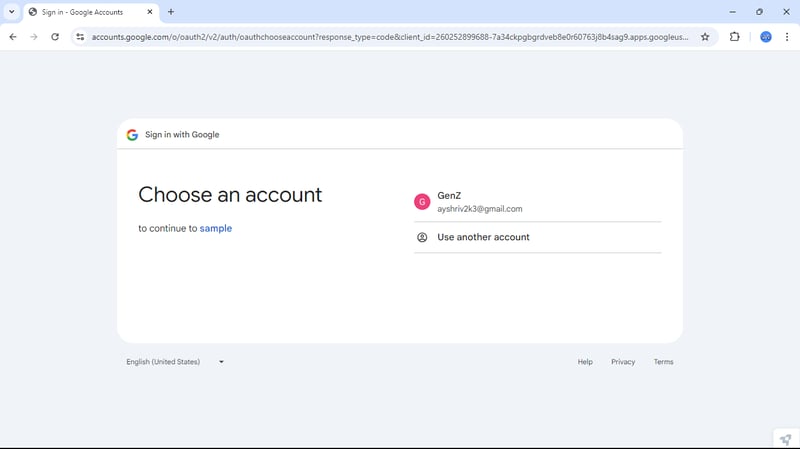
we get the similar response like this

now we can access the end points.
GitHub Authentication
GitHub Authentication in Spring Boot allows users to log in using their GitHub accounts, streamlining the authentication process and enhancing security. By integrating GitHub as an OAuth 2.0 provider, your application can authenticate users through GitHub's trusted platform. This involves registering your application on GitHub to obtain a Client ID and Client Secret, which are then configured in your Spring Boot application. Users are redirected to GitHub for login, and upon successful authentication, they are redirected back to your application with an access token, allowing secure access to your protected resources. This integration is ideal for applications targeting developers and tech-savvy users.
create GitHub account and go to settings

in the left corner we get the developer settings
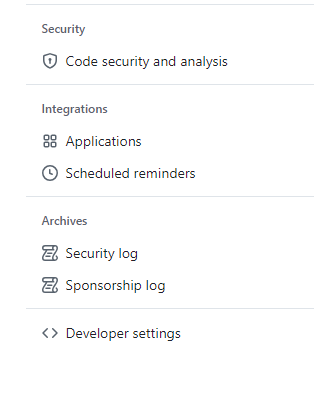
Navigate to OAuth Apps

click on create OAuth App

we get the interface like this
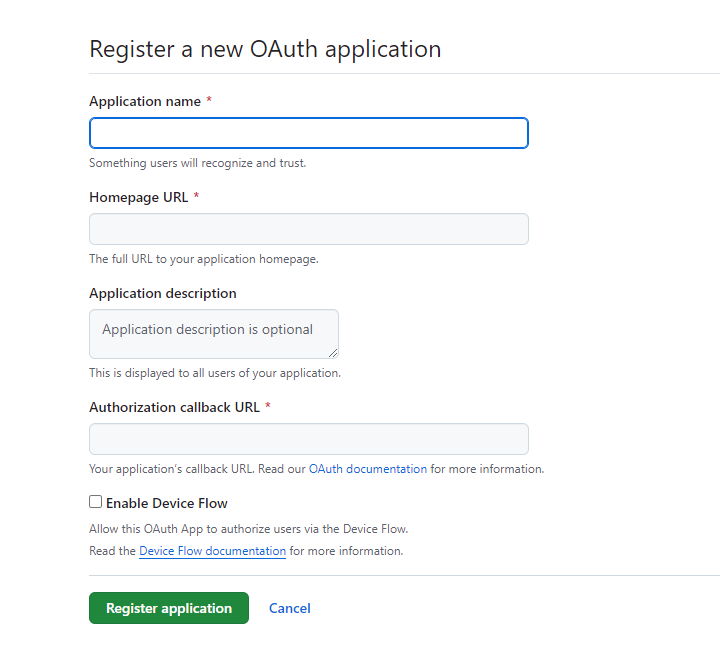
set ** Authorization callback URL ** according to your application port
http://localhost:8000/login/oauth2/code/github
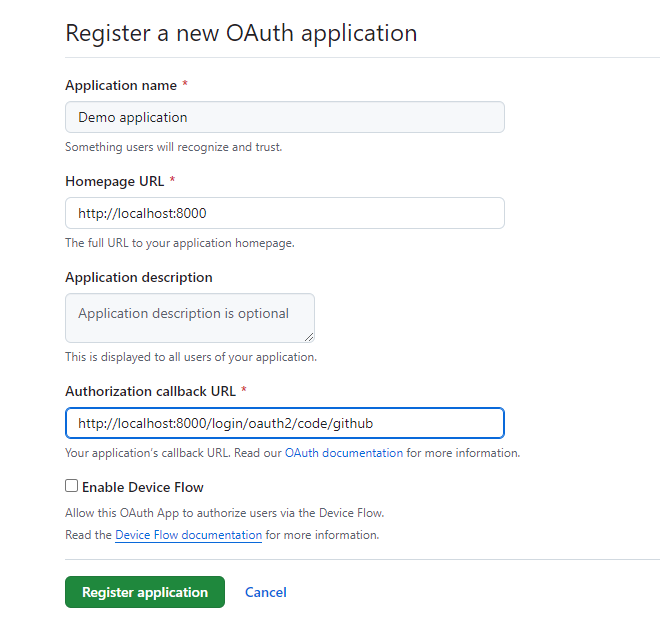
and set Homepage URL
http://localhost:8000
after registering the Application we get the Client ID and Client Secret

now replace with the Application.properties file properties
spring.security.oauth2.client.registration.github.client-id=Ov23liBMLc5e1ItoONPx spring.security.oauth2.client.registration.github.client-secret=

Test the GitHub Login
Login with GitHub: When prompted, log in with your GitHub credentials.
Success Redirect: Upon successful authentication, you'll be redirected to the /home page of your application.
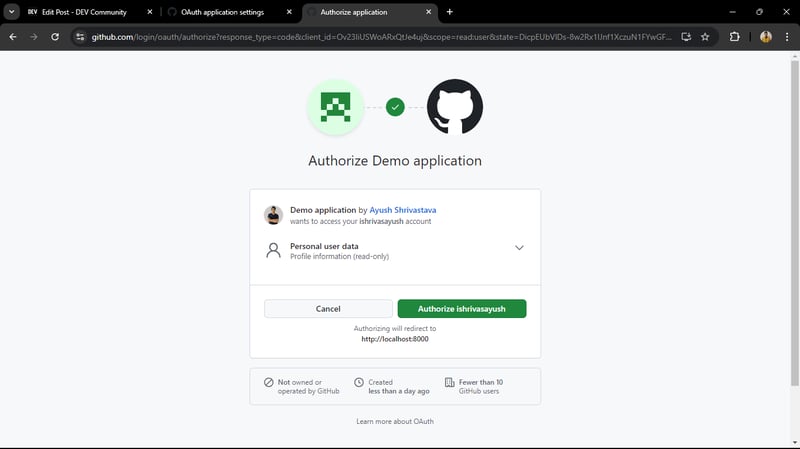
You can explore the complete source code for the User Authentication Service on my GitHub repository. This project showcases various features such as user registration, login, and secure access using JWT for authentication. Feel free to check it out, contribute, or use it as a reference for your own projects!
GitHub Repository: https://github.com/ishrivasayush/oauth2-authentication-service
Conclusion
Implementing OAuth 2.0 with Spring Boot, using Google and GitHub as authentication providers, is a powerful way to enhance the security and usability of your application. By allowing users to log in with their existing accounts, you reduce friction and provide a smoother user experience. At the same time, securing your API endpoints with JWT ensures that only authenticated users have access to sensitive resources.
Through this guide, we’ve covered everything from setting up OAuth credentials on Google and GitHub to configuring your Spring Boot application to handle authentication and protect your endpoints. Whether you’re new to OAuth 2.0 or looking to integrate it into your projects, these steps will help you build a secure and scalable authentication system.
Security is a never-ending journey, but with the right tools and practices, you can build applications that are both safe and user-friendly. Now that you have a solid foundation, you can explore further by adding more providers, customizing the user experience, or diving deeper into JWT configurations. Happy coding!
-
 How to effectively modify the CSS attribute of the ":after" pseudo-element using jQuery?Understanding the Limitations of Pseudo-Elements in jQuery: Accessing the ":after" SelectorIn web development, pseudo-elements like ":a...Programming Posted on 2025-04-19
How to effectively modify the CSS attribute of the ":after" pseudo-element using jQuery?Understanding the Limitations of Pseudo-Elements in jQuery: Accessing the ":after" SelectorIn web development, pseudo-elements like ":a...Programming Posted on 2025-04-19 -
 Flatten and Ravel: NumPy function selection guideUnderstanding the Difference Between Numpy's Flatten and Ravel FunctionsThe numpy library provides two methods, flatten and ravel, to convert mult...Programming Posted on 2025-04-19
Flatten and Ravel: NumPy function selection guideUnderstanding the Difference Between Numpy's Flatten and Ravel FunctionsThe numpy library provides two methods, flatten and ravel, to convert mult...Programming Posted on 2025-04-19 -
 How to Combine Data from Three MySQL Tables into a New Table?mySQL: Creating a New Table from Data and Columns of Three TablesQuestion:How can I create a new table that combines selected data from three existing...Programming Posted on 2025-04-19
How to Combine Data from Three MySQL Tables into a New Table?mySQL: Creating a New Table from Data and Columns of Three TablesQuestion:How can I create a new table that combines selected data from three existing...Programming Posted on 2025-04-19 -
 Tips for binding event listeners for dynamically added HTML elements using jQueryAttaching Events to Dynamic HTML Elements in jQueryWhen working with dynamically loaded content in web applications, attaching event listeners to elem...Programming Posted on 2025-04-19
Tips for binding event listeners for dynamically added HTML elements using jQueryAttaching Events to Dynamic HTML Elements in jQueryWhen working with dynamically loaded content in web applications, attaching event listeners to elem...Programming Posted on 2025-04-19 -
 The compiler error "usr/bin/ld: cannot find -l" solutionError Encountered: "usr/bin/ld: cannot find -l"When attempting to compile a program, you may encounter the following error message:usr/bin/l...Programming Posted on 2025-04-19
The compiler error "usr/bin/ld: cannot find -l" solutionError Encountered: "usr/bin/ld: cannot find -l"When attempting to compile a program, you may encounter the following error message:usr/bin/l...Programming Posted on 2025-04-19 -
 Why Am I Getting a \"Class \'ZipArchive\' Not Found\" Error After Installing Archive_Zip on My Linux Server?Class 'ZipArchive' Not Found Error While Installing Archive_Zip on Linux ServerSymptom:When attempting to run a script that utilizes the ZipAr...Programming Posted on 2025-04-19
Why Am I Getting a \"Class \'ZipArchive\' Not Found\" Error After Installing Archive_Zip on My Linux Server?Class 'ZipArchive' Not Found Error While Installing Archive_Zip on Linux ServerSymptom:When attempting to run a script that utilizes the ZipAr...Programming Posted on 2025-04-19 -
 How to center aligned buttons in a Div?Centering a Button Within a DivIn web development, it's often desirable to center a button within a containing div. Let's explore two solution...Programming Posted on 2025-04-19
How to center aligned buttons in a Div?Centering a Button Within a DivIn web development, it's often desirable to center a button within a containing div. Let's explore two solution...Programming Posted on 2025-04-19 -
 How to efficiently repeat string characters for indentation in C#?Repeating a String for IndentationWhen indenting a string based on an item's depth, it's convenient to have an efficient way to return a strin...Programming Posted on 2025-04-19
How to efficiently repeat string characters for indentation in C#?Repeating a String for IndentationWhen indenting a string based on an item's depth, it's convenient to have an efficient way to return a strin...Programming Posted on 2025-04-19 -
 When to use "try" instead of "if" to detect variable values in Python?Using "try" vs. "if" to Test Variable Value in PythonIn Python, there are situations where you may need to check if a variable has...Programming Posted on 2025-04-19
When to use "try" instead of "if" to detect variable values in Python?Using "try" vs. "if" to Test Variable Value in PythonIn Python, there are situations where you may need to check if a variable has...Programming Posted on 2025-04-19 -
 How Can I Execute Multiple SQL Statements in a Single Query Using Node-MySQL?Multi-Statement Query Support in Node-MySQLIn Node.js, the question arises when executing multiple SQL statements in a single query using the node-mys...Programming Posted on 2025-04-19
How Can I Execute Multiple SQL Statements in a Single Query Using Node-MySQL?Multi-Statement Query Support in Node-MySQLIn Node.js, the question arises when executing multiple SQL statements in a single query using the node-mys...Programming Posted on 2025-04-19 -
 How to install Boost_1_60_0.zip on WindowsBoost_1_60_0 .zip Installation in WindowsTo proceed with the installation of Boost_1_60_0 in Windows, you will need to navigate to the directory where...Programming Posted on 2025-04-19
How to install Boost_1_60_0.zip on WindowsBoost_1_60_0 .zip Installation in WindowsTo proceed with the installation of Boost_1_60_0 in Windows, you will need to navigate to the directory where...Programming Posted on 2025-04-19 -
 Do I Need to Explicitly Delete Heap Allocations in C++ Before Program Exit?Explicit Deletion in C Despite Program ExitWhen working with dynamic memory allocation in C , developers often wonder if it's necessary to manu...Programming Posted on 2025-04-19
Do I Need to Explicitly Delete Heap Allocations in C++ Before Program Exit?Explicit Deletion in C Despite Program ExitWhen working with dynamic memory allocation in C , developers often wonder if it's necessary to manu...Programming Posted on 2025-04-19 -
 How to dynamically access global variables in JavaScript?Accessing Global Variables Dynamically by Name in JavaScriptGetting access to global variables during runtime can be a common requirement. Typically, ...Programming Posted on 2025-04-19
How to dynamically access global variables in JavaScript?Accessing Global Variables Dynamically by Name in JavaScriptGetting access to global variables during runtime can be a common requirement. Typically, ...Programming Posted on 2025-04-19 -
 `console.log` shows the reason for the modified object value exceptionObjects and Console.log: An Oddity UnraveledWhen working with objects and console.log, you may encounter peculiar behavior. Let's unravel this mys...Programming Posted on 2025-04-19
`console.log` shows the reason for the modified object value exceptionObjects and Console.log: An Oddity UnraveledWhen working with objects and console.log, you may encounter peculiar behavior. Let's unravel this mys...Programming Posted on 2025-04-19 -
 Solve the \\"String value error\\" exception when MySQL inserts EmojiResolving Incorrect String Value Exception When Inserting EmojiWhen attempting to insert a string containing emoji characters into a MySQL database us...Programming Posted on 2025-04-19
Solve the \\"String value error\\" exception when MySQL inserts EmojiResolving Incorrect String Value Exception When Inserting EmojiWhen attempting to insert a string containing emoji characters into a MySQL database us...Programming Posted on 2025-04-19
Study Chinese
- 1 How do you say "walk" in Chinese? 走路 Chinese pronunciation, 走路 Chinese learning
- 2 How do you say "take a plane" in Chinese? 坐飞机 Chinese pronunciation, 坐飞机 Chinese learning
- 3 How do you say "take a train" in Chinese? 坐火车 Chinese pronunciation, 坐火车 Chinese learning
- 4 How do you say "take a bus" in Chinese? 坐车 Chinese pronunciation, 坐车 Chinese learning
- 5 How to say drive in Chinese? 开车 Chinese pronunciation, 开车 Chinese learning
- 6 How do you say swimming in Chinese? 游泳 Chinese pronunciation, 游泳 Chinese learning
- 7 How do you say ride a bicycle in Chinese? 骑自行车 Chinese pronunciation, 骑自行车 Chinese learning
- 8 How do you say hello in Chinese? 你好Chinese pronunciation, 你好Chinese learning
- 9 How do you say thank you in Chinese? 谢谢Chinese pronunciation, 谢谢Chinese learning
- 10 How to say goodbye in Chinese? 再见Chinese pronunciation, 再见Chinese learning
























